Let’s be honest, that hair loss sneaks up slowly. One day you’re styling as usual, the next you catch your reflection under harsh bathroom light and think, “Wait… was that always there?”. And that quiet moment of recognition is where most hair transplant stories begin.
But here’s the catch: the internet makes it confusing. Thousands of clinics, flashy “before-after” reels, and terms like FUE, DHI, Sapphire, or “unlimited grafts”. It’s easy to feel lost. You’re not alone that most people who contact clinics in Turkey say their biggest struggle wasn’t cost, it was understanding what’s real and what’s marketing.
That’s why we wrote this guide. It’s not a brochure, it’s a roadmap. Compiled by the Istanbeautiful team, a group of Istanbul locals, expats, and travelers who’ve interviewed surgeons, watched operations, and spoken with real patients. Our goal isn’t to sell you a procedure; it’s to make sure you know what you’re saying yes to.
According to the International Society of Hair Restoration Surgery (ISHRS, 2024), more than 870,000 hair restoration procedures were performed worldwide last year. Turkey ranked among the top three destinations, thanks to experienced surgeons, competitive pricing, and surgeon-led operations that attract patients from over 100 countries.
This guide breaks it all down: how to know if you’re a candidate, how each technique works, what recovery really feels like, and what results to expect one year later. We’ll also walk through cost, safety, and the emotional side most articles skip.
So, if you’re considering a hair transplant and want straight answers, not sales talk, grab a coffee. Let’s go step by step.
Are You a Candidate for a Hair Transplant?
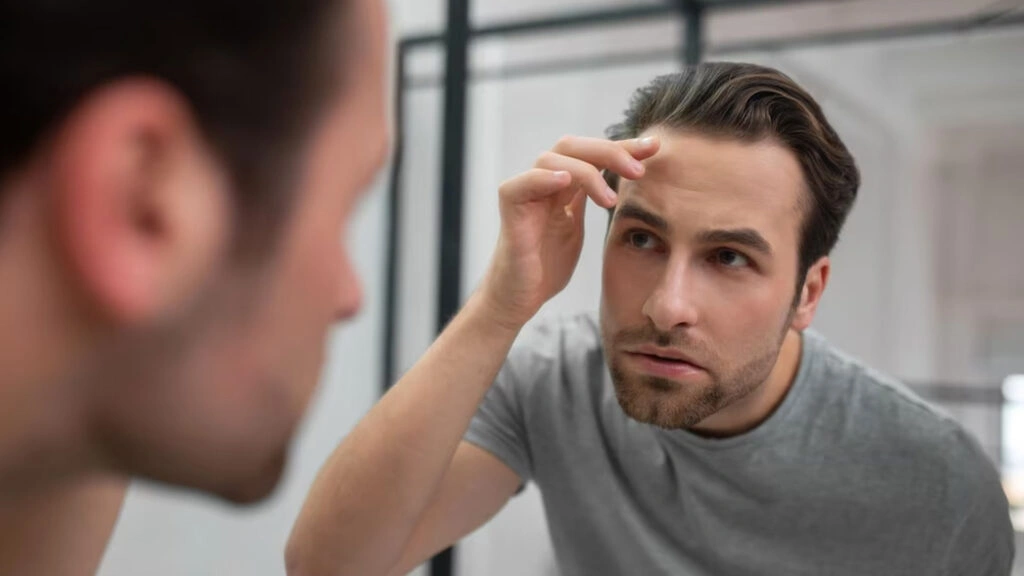
Here’s something few clinics will say up front: not everyone who wants a hair transplant actually needs one yet. Sometimes what looks like permanent loss is just temporary thinning, hormonal fluctuation, or stress-related shedding. The right timing matters more than enthusiasm.
What Makes a Good Candidate
You’re generally a strong candidate if you:
- Have stable hair loss for at least 12 months.
- Possess a healthy donor area (the back and sides of your head, where hair is genetically resistant to balding).
- Have realistic expectations about what can be achieved.
- Are in good overall health and free from active scalp conditions.
According to the American Academy of Dermatology (AAD, 2024), the best surgical results happen when the underlying cause of hair loss most often androgenetic alopecia that has been correctly diagnosed and stabilized. If the loss is still progressing rapidly, your transplanted grafts will grow, but surrounding native hair may continue thinning, leaving uneven density.
Dr. Gökhan Bilgin (Smile Hair Clinic):
“We don’t rush into surgery when a patient’s loss pattern is still changing. The goal is not quick coverage, it’s stability first, then precision.”
The Norwood Map: Understanding Your Pattern
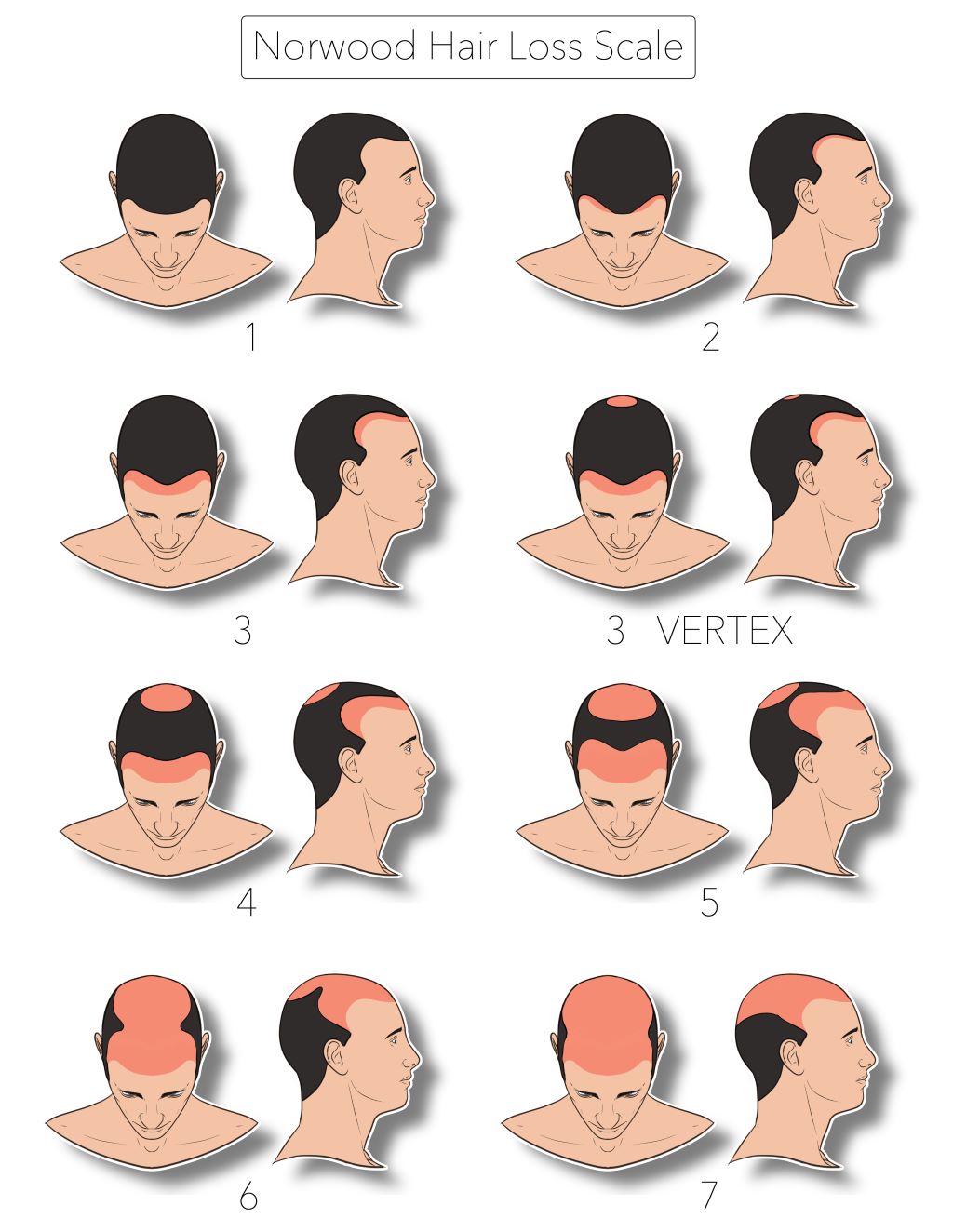
Surgeons use something called the Norwood scale to measure male hair loss stages, from minor temple recession (Type 2) to complete crown and frontal loss (Type 7). This helps them plan graft numbers, density targets, and long-term design that looks natural as you age.
For women, the Ludwig scale is used to evaluate diffuse thinning, which requires a different graft strategy.
When Surgery Should Wait
If your loss is triggered by:
- Hormonal imbalance (thyroid, postpartum, or PCOS)
- Stress-related shedding (telogen effluvium)
- Autoimmune causes (alopecia areata), then a transplant isn’t the first step. These conditions respond better to medical treatment first.
In fact, a review in the International Journal of Trichology (2023) found that stabilizing hair loss with medication or PRP therapy increased long-term transplant density by 28%. That’s why good clinics don’t push, they prepare.
Dr. Güncel Öztürk (HairNeva Clinic):
“A strong foundation always gives better results. We spend months strengthening the scalp before the first incision. It’s not delay, it’s preparation.”
Simple Self-Check
Ask yourself three things:
- Has my hair loss stopped spreading?
- Is my donor area still dense when trimmed short?
- Am I emotionally ready to wait 12 months for results?
If the answer is yes, you’re likely ready for a consultation. If not, start with your dermatologist, stabilize first, and then plan.
Techniques Explained: FUE, DHI & FUT

This is where things get confusing fast. Every clinic throws around big terms like Sapphire FUE, DHI, or Micrograft Extraction, but the truth is, all hair transplants follow the same principle: take healthy hair from where it grows and move it to where it doesn’t. The difference lies in how it’s done.
Let’s break down the three main techniques you’ll actually encounter.
FUE (Follicular Unit Extraction)

FUE is the most common and modern method today. Instead of removing a strip of skin, the surgeon extracts individual grafts, tiny clusters of one to four hairs from the back or sides of your head using micro-punches. These grafts are then implanted one by one into the recipient area.
Dr. Ahmet Murat (Hermest Hair Clinic):
“Think of FUE as sculpting rather than surgery. Every graft has a natural direction and angle. Our job is to read it correctly and recreate what nature originally designed.”
- Pros: minimal scarring, faster healing, and natural direction control.
- Cons: takes longer than strip methods; requires high surgeon precision.
According to a 2024 summary in StatPearls, FUE procedures now make up over 85% of all hair transplants worldwide, largely because they offer better cosmetic recovery and reduced downtime compared to traditional strip harvesting.

Some clinics use Sapphire FUE, where sapphire-tipped blades create smaller, smoother incisions. The goal is faster healing and tighter packing of grafts—not a completely new method, just a refinement of the standard.
DHI (Direct Hair Implantation)

DHI is essentially a more controlled form of FUE. The grafts are extracted as usual but implanted immediately using a Choi implanter pen, skipping the step of pre-made incisions. This means less time between extraction and placement, improving graft survival.
A 2013 study in the Journal of Cutaneous and Aesthetic Surgery found that this immediate implantation can increase follicle survival by up to 15%, especially in dense packing zones like the hairline.
Dr. Gökhan Bilgin (Smile Hair Clinic):
“DHI gives us better control of angle and direction, especially for refined areas like temples and beards. But it’s slower and more technical, it’s a method for precision, not speed.”
- Best for: patients wanting maximum density in limited areas or natural, feathered hairlines.
- Limitation: fewer grafts per session (usually up to 3,000).
FUT (Follicular Unit Transplantation / Strip Method)
FUT is the older but still valid technique in select cases. A narrow strip of scalp is removed from the donor area, and grafts are dissected under a microscope. It leaves a fine linear scar but allows for a higher graft yield in one sitting.
Dr. Güncel Öztürk (HairNeva Clinic):
“We rarely perform FUT now, but for patients with very advanced loss and limited donor space, it can be the right choice. It’s not outdated, it’s just specialized.”
According to the British Journal of Dermatology, FUT remains a practical option for Norwood 6–7 patients where donor conservation is critical.
So, Which Technique Is Right for You?
If you prefer:
- Short haircuts → FUE or DHI.
- Thicker density in small areas → DHI.
- Maximum grafts in one session → FUT or combined FUE+FUT planning.
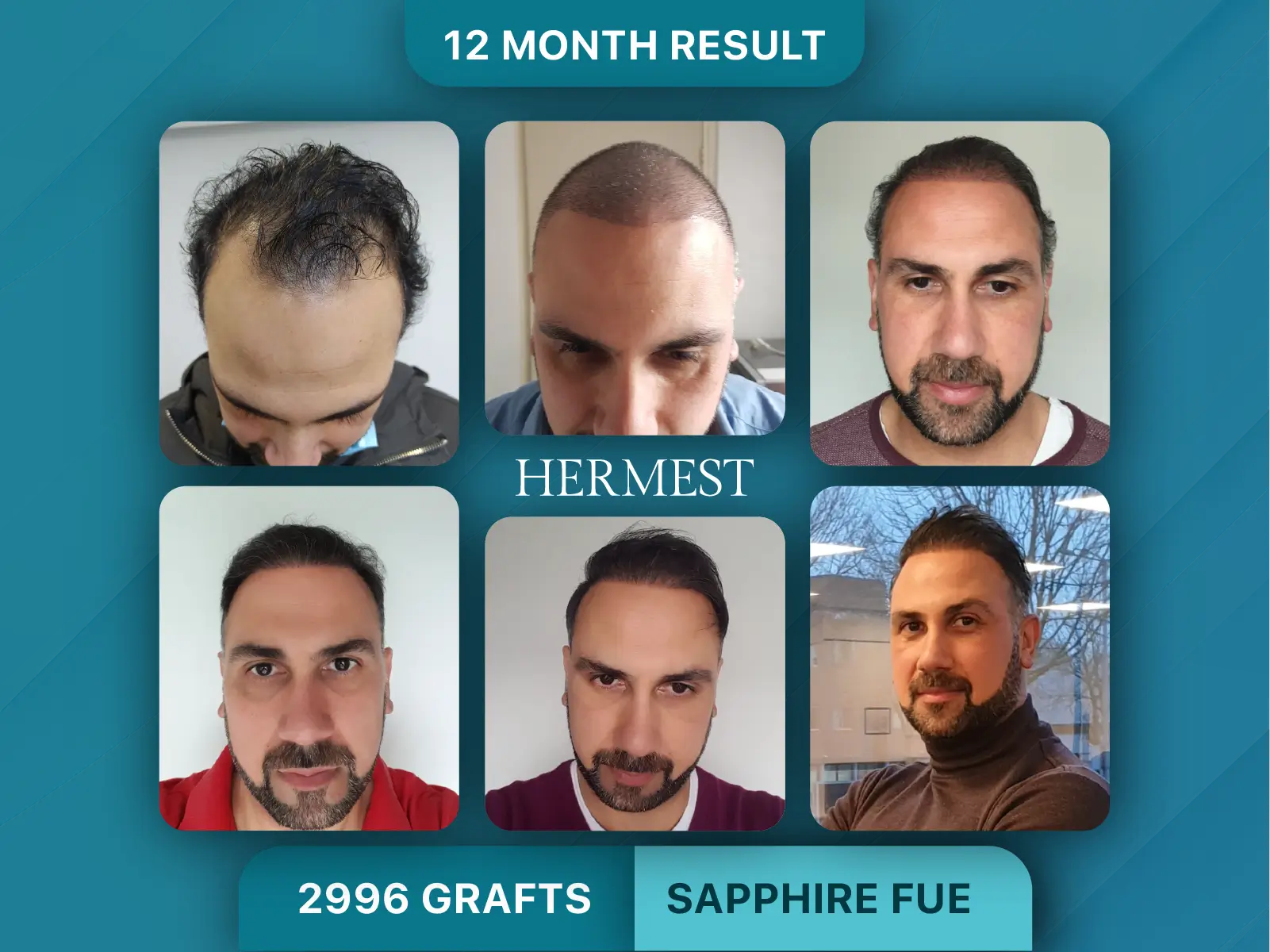
Most clinics in Istanbul favor FUE or DHI, depending on scalp type, budget, and design goals. The smartest choice isn’t the trendiest, it’s the one that fits your long-term plan.
Donor Math 101: How Many Grafts You Can Safely Use
Here’s something most clinics won’t tell you upfront: your donor area isn’t endless. It’s not a magic bank of grafts, it’s a limited biological resource. How you manage it today decides what’s possible tomorrow, especially if you’ll ever need a second or third session later in life.
The Basics of Donor Capacity
For most people, the back and sides of the head (the “safe zone”) contain around 5,000 to 7,000 grafts that can be extracted without visible thinning. Each graft holds one to four hairs. The total depends on your hair type, density, and scalp elasticity.
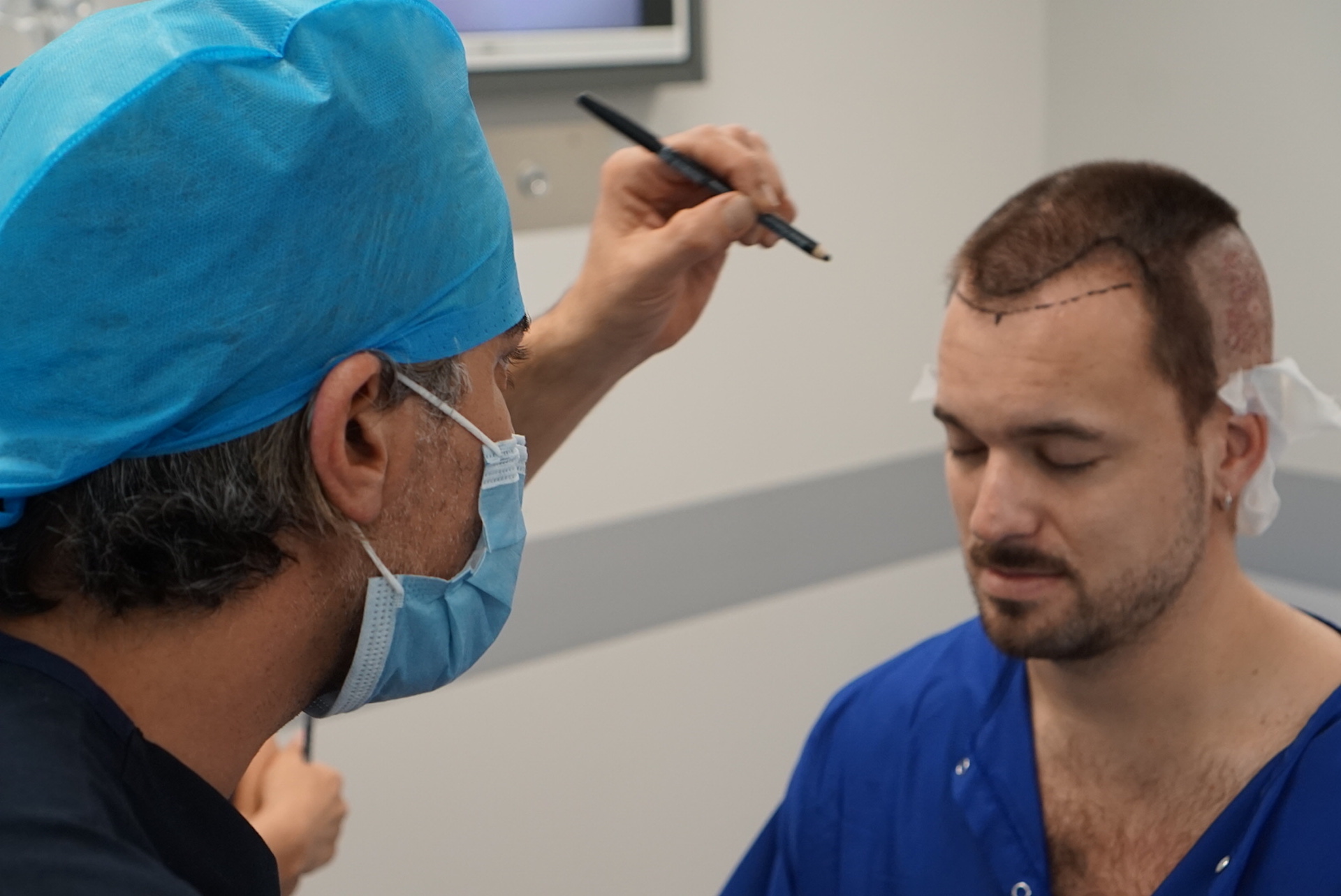
According to StatPearls (2024) and the International Society of Hair Restoration Surgery (ISHRS), the safest extraction ratio is roughly 25–35% of total donor follicles. Go beyond that, and you risk creating patchiness or permanent donor depletion.
Dr. Ahmet Murat (Hermest Hair Clinic):
“We calculate every graft like currency. The donor area is your lifetime budget, spend it wisely. Our job isn’t to empty it; it’s to use it sustainably.”
Why Donor Planning Matters
A well-designed hair transplant isn’t about doing “as many grafts as possible”. It’s about doing the right number for your stage of hair loss. A Norwood 3–4 patient might need 2,500–3,500 grafts for balanced coverage. Someone at Norwood 6–7 may need a combination of techniques (like FUT + FUE) or staged sessions.

A 2023 study published in the International Journal of Trichology found that overharvesting during initial sessions led to visibly thin donor zones in 22% of patients, mostly those treated at high-volume clinics using technician-only extraction. That’s a reminder to always ask who will be handling your grafts.
Dr. Gökhan Bilgin (Smile Hair Clinic):
“Donor management isn’t about speed. It’s about mapping. We photograph, measure density per cm², and plan future zones before making a single punch.”
The Lifetime Approach
Hair loss doesn’t stop after surgery. You might lose more native hair over the years, which is why smart surgeons build a donor reserve keeping grafts in the bank for future refinement.
The American Academy of Dermatology (AAD) recommends re-evaluating donor areas every 2–3 years post-surgery. Density mapping helps prevent long-term imbalance between transplanted and native zones.
Think of it this way: your first transplant builds the foundation, the second refines it, and careful donor budgeting ensures you’ll still look natural at sixty.
Hair Transplant Costs & What’s Usually Included
Let’s talk numbers which is the part most people secretly scroll down for first. The cost of a hair transplant varies dramatically depending on where you do it, who performs it, and how much work your scalp needs. But behind those price tags, there’s a logic worth understanding.
Average Cost by Country
| Country | Average Cost (USD) | Price Per Graft | Notes |
|---|---|---|---|
| Turkey | $1,500 – $3,500 | $0.40 – $1.00 | Usually includes hotel, transfers, and meds |
| UK | $5,000 – $9,000 | $2 – $3 | Often excludes post-op care |
| USA | $6,000 – $12,000 | $2.50 – $5 | Surgeon-led but expensive |
| Europe (Germany, Spain, Poland) | $3,500 – $7,000 | $1.50 – $2.50 | Balanced pricing, limited packages |
Data sources: USHAŞ (2025), ISHRS Global Census, and Forbes Health Survey on Medical Tourism Economics.
According to USHAŞ (International Health Services, 2025), over 600,000 foreign patients visit Turkey annually for aesthetic procedures, and hair transplants account for a large share. The value isn’t just the lower price, it’s the complete experience, combining hotel accommodation, airport transfers, aftercare kits, and translator support.
Dr. Güncel Öztürk (HairNeva Clinic):
“Our goal is to make the process smooth from landing to leaving. Patients don’t just pay for grafts, they pay for trust, coordination, and follow-up.”
What the Price Usually Covers
Most reputable Istanbul clinics include:
- Pre-op consultation and hair analysis
- Surgery (FUE or DHI) under local anesthesia
- All surgical supplies and graft handling
- Post-op medications and shampoo
- Hotel accommodation (2–3 nights)
- Transfers between airport, hotel, and clinic
- Translator and follow-up evaluation
Why Prices Vary
- Surgeon involvement: If the doctor personally performs extraction and implantation, expect higher, but justified costs.
- Technique: DHI tends to be pricier due to time and precision.
- Repair or complex cases: Fixing old scars or poor results from elsewhere increases both duration and cost.
A report by the International Society of Hair Restoration Surgery (ISHRS, 2024) notes that procedure quality correlates more with surgeon supervision than graft count or clinic branding. That means a small, surgeon-led team can outperform a large chain offering flashy discounts.
Dr. Ahmet Murat (Hermest Hair Clinic):
“Cheap doesn’t always mean affordable. The real cost of a bad transplant is another surgery to fix it.”
So, instead of chasing the lowest quote, look at what’s included and who’s in the room. A transparent, all-inclusive package from a licensed Turkish clinic often ends up being the most cost-effective and safest choice.
Procedure Day – Step by Step
For most people, the idea of surgery feels intimidating until they see how surprisingly calm a hair transplant day actually is. It’s not a hospital scene, it’s more like a long, focused spa day with medical precision. You’ll be awake, chatting, and even listening to music while the team works.
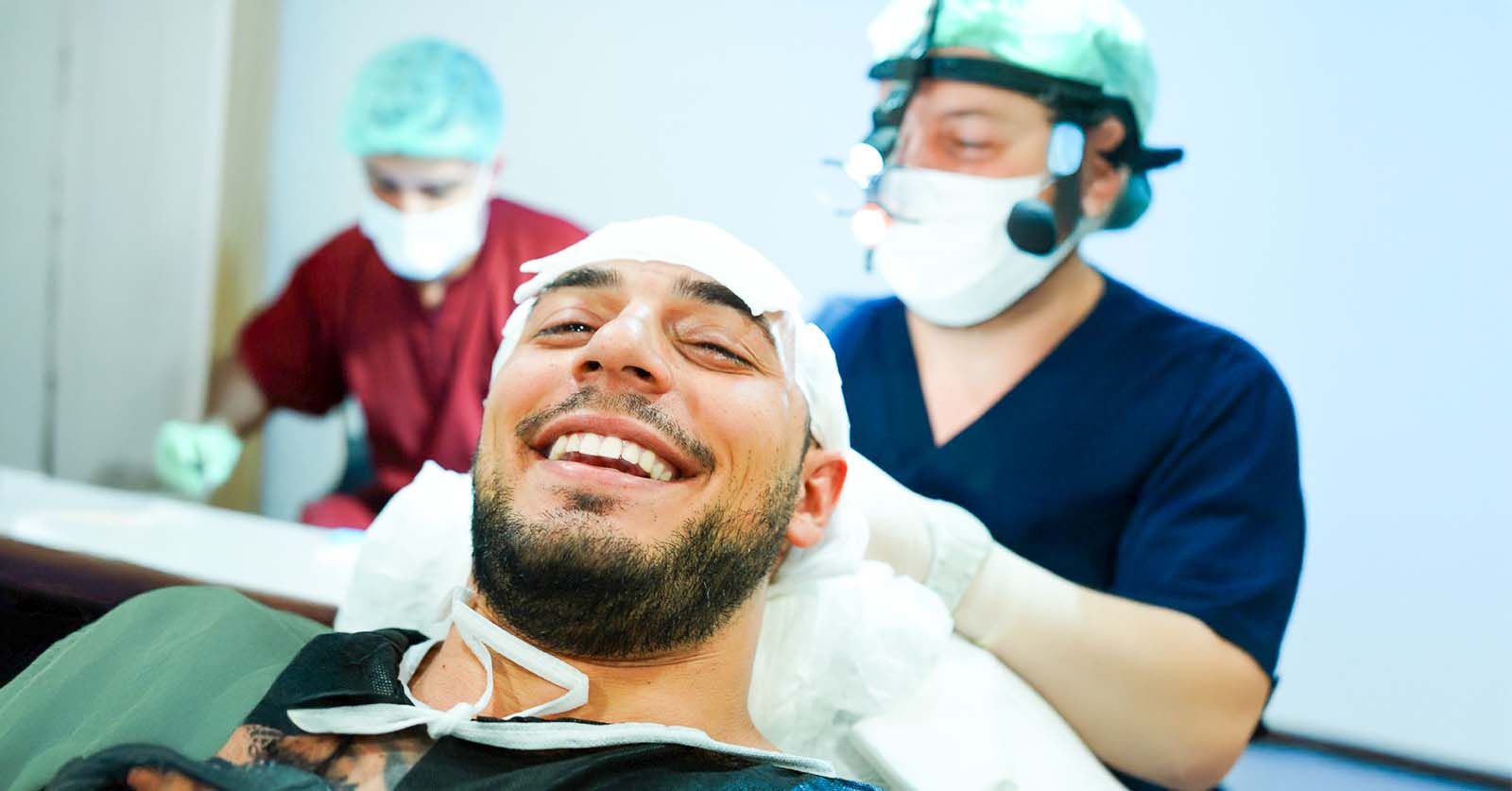
Here’s how it typically unfolds.
Morning Check-in and Consultation
You’ll start the day early at the clinic. After a light breakfast (no caffeine, as it can raise blood pressure), you’ll meet your medical team for a final review. This includes:
- A scalp analysis under magnification
- Drawing and confirming your new hairline design
- Reviewing your graft plan and density targets
Dr. Gökhan Bilgin (Smile Hair Clinic):
“This is where design becomes art. We balance medical mapping with aesthetic sense, your face shape, age, and natural angles all guide the placement.”
Once you approve the hairline, local anesthesia is applied. It stings briefly, then the rest of the day is painless.
Extraction (FUE or FUT Stage)
For FUE, tiny punches (0.7–0.9 mm) remove individual grafts from the donor area. Each graft is inspected under a microscope for quality and hydration. If you’re having DHI, these grafts are immediately loaded into implanter pens. This part takes 2–4 hours, depending on the number of grafts.
According to StatPearls (2024), grafts can survive safely outside the body for up to four hours, which is why experienced teams rotate between extraction and implantation to minimize exposure.
Lunch & Short Break
Yes, there’s usually a lunch break. You’ll stretch, eat, and check your phone. The team will spray your donor area with saline to keep it hydrated while you rest.
Implantation
This is the creative stage. Each graft is placed into pre-made channels (in FUE) or implanted directly with a Choi pen (in DHI). The surgeon controls the angle, depth, and direction of every graft.
Implantation typically lasts 3–5 hours. You might listen to music, chat, or even doze off.
Bandaging & Aftercare Briefing
When the final graft goes in, your donor area is lightly dressed, and your new hairline remains uncovered. You’ll receive your aftercare kit: saline spray, special shampoo, antibiotics, and written washing instructions.
Dr. Güncel Öztürk (HairNeva Clinic):
“We spend more time explaining aftercare than the surgery itself. What happens in the next 10 days determines 80% of your result.”
You’ll be driven back to your hotel for rest. A follow-up wash at the clinic usually takes place the next morning.
The entire process, from arrival to departure usually lasts 6–8 hours for a standard session. And since it’s under local anesthesia, you’ll walk out on your own two feet, not groggy or disoriented, just a little tender and excited to see what’s next.
Recovery & Aftercare — Day 0 to Month 12
Every patient asks the same thing: “What will recovery really feel like?” The honest answer is that it’s not painful, just peculiar. A bit of swelling, mild tightness, and a week of babying your scalp. After that, it’s all about patience.
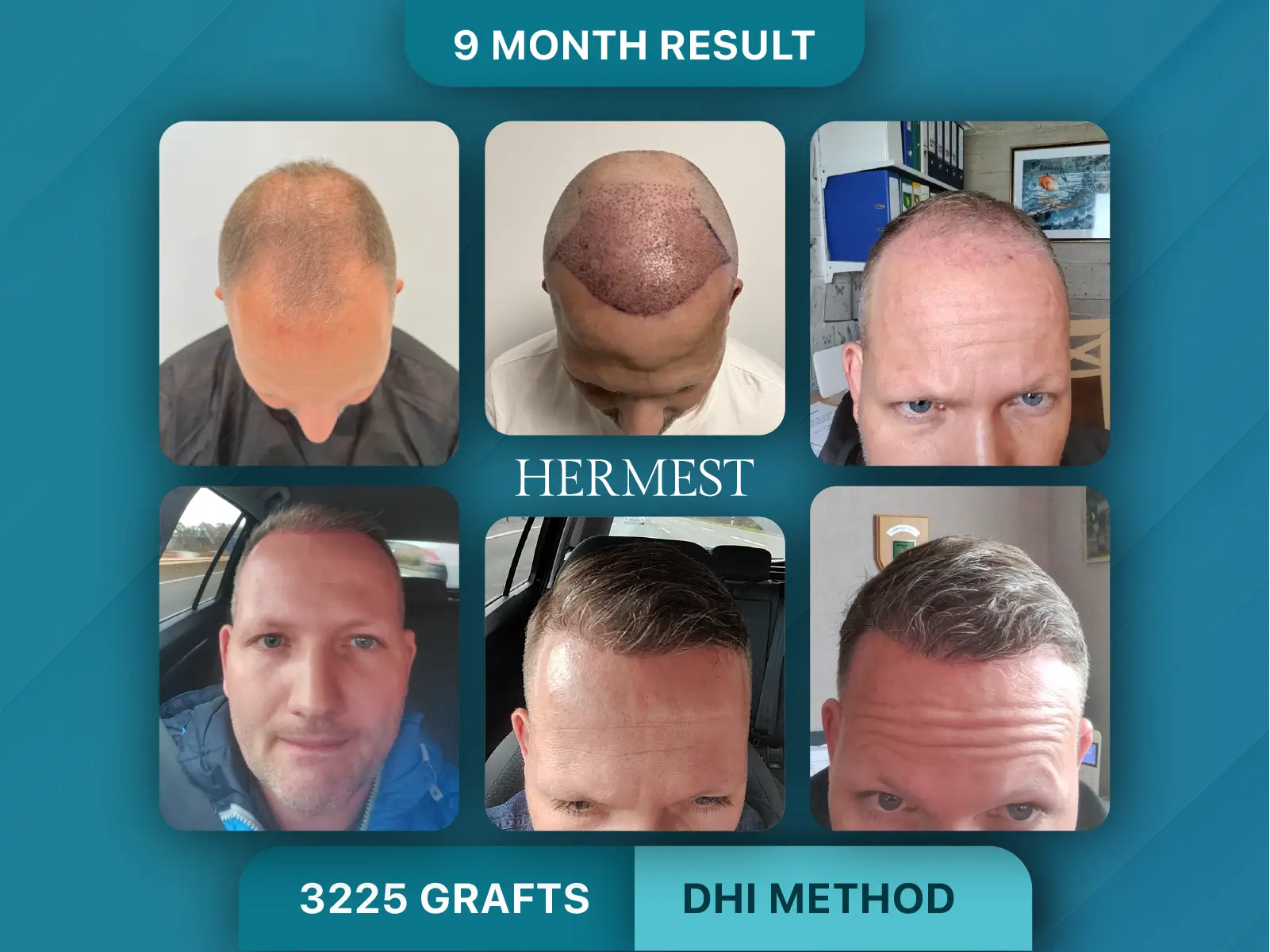
Here’s what the first year typically looks like.
Day 0–3: Rest and Protection
This is the “handle-with-care” phase. The grafts are fragile and need protection from pressure, sweat, and accidental touch. You’ll sleep with your head elevated at 45 degrees to prevent swelling, and spray your scalp with saline every few hours.
Dr. Ahmet Murat (Hermest Hair Clinic):
“We tell patients: treat your new grafts like seedlings. Water them, protect them, but don’t fuss. They’ll settle on their own.”
The donor area might feel tight or numb for a few days, but pain is minimal and controlled with mild painkillers.
Day 4–10: First Wash & Shedding
Around day four, your first clinic wash happens. This is when the dried plasma and scabs are gently removed. By day seven, your scalp looks cleaner, but a process called “shock loss” begins that is a temporary shedding of transplanted hairs. Don’t panic; it’s part of the growth cycle.
A review in the Dermatologic Surgery Journal (2023) confirmed that 90% of transplanted hairs enter resting phase (telogen) within two weeks post-surgery before regrowth starts months later.
Dr. Gökhan Bilgin (Smile Hair Clinic):
“Patients often text us in panic around week three. I remind them, what falls now will regrow stronger. It’s the body resetting the clock.”
Month 1–3: The Quiet Phase
Visibly, not much happens. Underneath, follicles are anchoring, blood supply is rebuilding, and new shafts are forming. The American Academy of Dermatology (AAD) notes this period as critical for scalp health, so avoid gym workouts, sun exposure, and hair dye.
Mild itching is common; it’s just skin renewal. PRP or laser therapy can be added during this phase to boost regrowth speed.
Month 4–6: First Signs of Life
Tiny baby hairs start breaking through. They’re thin, soft, and uneven, but they mark the beginning of visible progress. Most patients see 30–40% of final density by month six.
Redness fades, the scalp feels more natural, and hairlines start blending.
Dr. Güncel Öztürk (HairNeva Clinic):
“We call this the patience phase. Every follicle has its rhythm. Don’t rush results, your body knows the tempo.”
Month 7–12: Maturation & Full Density
From month seven onward, things accelerate. Hairs become thicker, darker, and align with natural direction. By month twelve, about 90–95% of grafts have fully matured, according to StatPearls (2024).
This is when you can finally judge your outcome, style it, cut it, and even forget it’s transplanted.
Istanbeautiful team note:
“Almost every patient we spoke to said the best feeling came not when they saw the hairline, but when they stopped thinking about it altogether.”
Keep using your doctor-recommended shampoo and medical therapy (Finasteride or Minoxidil) unless advised otherwise. It’s not just about maintaining grafts, it’s about protecting the rest of your native hair.
Risks, Red Flags & How to Choose Safely
Most hair transplants go smoothly, especially in Turkey where the experience level is high. But that doesn’t mean every clinic is the same. The biggest difference between great results and regret often comes down to who actually performs the surgery and how responsibly the donor area is managed.
Realistic Risks (and How to Avoid Them)
- Overharvesting: Taking too many grafts from the donor area can leave visible thinning on the back and sides. This usually happens in high-volume clinics where speed is prioritized over planning.
- Shock Loss: Temporary shedding of surrounding native hair after surgery. It grows back, but can be minimized with gentle handling and medical therapy.
- Infection or Folliculitis: Rare when proper hygiene is followed. The International Society of Hair Restoration Surgery (ISHRS) recommends sterile, surgeon-supervised conditions for every stage of the procedure.
- Low Graft Survival: Often caused by poor storage solutions or long exposure times. Proper hydration, temperature control, and immediate implantation are key.
Dr. Ahmet Murat (Hermest Hair Clinic):
“A successful transplant depends on details the patient never sees, hydration, depth, angle, and blood supply. The surgery doesn’t end when the graft is placed; it ends when it grows.”
According to a 2024 analysis published in the Journal of Cutaneous and Aesthetic Surgery, graft survival rates drop by nearly 20% in unsupervised procedures led entirely by technicians. That’s why surgeon presence is non-negotiable.
Red Flags When Researching Clinics
Be cautious if you notice:
- No mention of the surgeon’s name or credentials on the website.
- Promises of “unlimited grafts” or fixed prices for all cases.
- A consultation handled only by sales staff or translators, not medical professionals.
- Stock before-and-after photos that look generic or overly edited.
- Pushy behavior, such as discounts “valid only today”.
Dr. Gökhan Bilgin (Smile Hair Clinic):
“Patients often think they’re saving money with technician-heavy setups. But when something goes wrong, the fix always costs more, financially and emotionally.”
Safety Standards to Look For
- Licensed Facility: Confirm registration with the Turkish Ministry of Health, which inspects all authorized medical-tourism clinics.
- Surgeon Involvement: Ask who performs the extractions and implantations—not just who “oversees”.
- Graft Management Protocol: The best clinics use sterile saline or HypoThermosol storage to keep grafts viable during extraction.
- Limited Daily Cases: Ethical clinics perform no more than 1–2 surgeries per day per surgeon, allowing full attention to detail.
The American Academy of Dermatology (AAD) reminds patients that choosing a clinic is as much a medical decision as a cosmetic one. Credentials matter more than promotions.
Final Check Before You Commit
- Ask for an in-person or video consultation with the surgeon.
- Review verified before-and-after photos from patients with similar hair types.
- Request a personalized donor and graft report, not a generic promise.
When you see transparency, patient education, and careful planning, you’re in the right place. A good clinic doesn’t convince you, they teach you.
When a Second Session Makes Sense
Here’s a common truth few clinics advertise openly: one hair transplant isn’t always the end of the journey. Hair loss is progressive, and sometimes the first surgery lays the foundation while the second hair transplant brings balance, density, or refinement.
That’s not a sign of failure, it’s just how biology and time work.
Why Some Patients Need a Second Transplant
There are three main reasons people consider another session:
- Adding Density: Sometimes, after 12–18 months, you may want a thicker look. That’s especially common for men with fine hair or naturally lighter density. Surgeons can safely implant another 1,000–2,000 grafts in the same region to fill gaps or improve texture.
- Treating New Areas: If your hair loss continues behind or around the transplanted area, a second session can extend coverage to new zones like the crown or temples.
- Repair or Correction: Some patients seek to fix results from older techniques (like visible plugs or linear FUT scars). Modern FUE or DHI can soften harsh hairlines or blend older work for a natural finish.
When to Consider It
Timing is everything. The International Society of Hair Restoration Surgery (ISHRS) recommends waiting at least 12 months, ideally 18, before any second session. This allows:
- Full graft maturation and natural thickening of the first transplant.
- Complete donor recovery and scar softening.
- Stable hair loss pattern for precise planning.
A 2024 report in Dermatologic Surgery Journal found that patients who waited over a year before their second surgery had higher graft survival rates and lower shock loss than those who rushed into it.
Dr. Gökhan Bilgin (Smile Hair Clinic):
“The first transplant gives structure. The second defines character. But only when your donor area and loss pattern are ready.”
When to Wait Longer
You might want to delay a second transplant if:
- Your hair loss is still progressing or unstable.
- The donor area feels overused from the first session.
- You haven’t continued your medical maintenance plan (like Finasteride or PRP).
So if your mirror tells you it might be time for round two, take a breath before booking anything. Meet your surgeon, evaluate your donor reserve, and let biology catch up to artistry. The best second transplant isn’t rushed, it’s ready.
Common Questions About Hair Transplants
How long does it take to see full results?
You’ll start noticing new growth around month 4, but true thickness and shape appear between months 9–12. According to the American Academy of Dermatology (AAD), most patients reach about 90–95% graft maturity by the one-year mark.
Is a hair transplant painful?
Not really. Local anesthesia numbs the scalp, and you’ll stay awake during the procedure. Patients usually describe the sensation as mild pressure, not pain. Afterward, you may feel tightness or sensitivity for a few days, that is easily managed with medication.
Will my transplanted hair fall out again?
The transplanted hair comes from genetically resistant follicles, so it’s permanent. However, native hair around it can still thin over time, which is why doctors recommend ongoing medical treatments like Finasteride, Minoxidil, or PRP for protection.
Can anyone get a hair transplant?
Not everyone. You need a stable pattern of loss and a healthy donor area. Those with medical causes like thyroid disease or autoimmune alopecia should treat those conditions first before considering surgery.
What’s the recovery like?
The first week is the most delicate. You’ll need to spray saline, sleep with your head elevated, and avoid sweating. By week two, you’ll wash normally. Redness fades within a month, and by three months, you can live as usual.
How much does a hair transplant cost in Turkey?
The average cost is $1,500–$3,500, depending on technique, surgeon experience, and graft count. Most packages include hotel, transfers, and medications. (Stats: USHAŞ, 2025 & ISHRS Global Report, 2024.)
Is Turkey really safe for hair transplants?
Yes, when done in a licensed clinic under a Ministry of Health–registered surgeon. Turkey’s regulations for foreign patients are strict, and it’s now one of the top three safest global destinations for medical tourism.
Can I go back to work right after surgery?
Most people return to work in 5–7 days. If your job is physically demanding, wait at least ten days to avoid sweat or pressure on the grafts.
Do hair transplants look natural now?
Absolutely. With modern FUE and DHI tools, the direction, density, and angle of every graft are precisely controlled. The goal isn’t perfection, it’s invisibility. When it’s done right, no one can tell.
Can I get a beard or eyebrow transplant too?
Yes. The same FUE or DHI techniques are used for facial areas. Istanbul clinics perform thousands of beard and eyebrow transplants annually with success rates above 90%, according to ISHRS (2024) data.
What if I had a failed transplant before?
A second procedure can repair scars, plug-like grafts, or uneven density. The key is donor management and surgeon skill. Always choose a clinic experienced in repair and correction cases, not just first-time surgeries.
Glossary of Hair Transplant Terms
When you start researching hair transplants, it can feel like learning a new language.
Here’s a plain-English glossary so you can read clinic websites and medical reports with confidence.
FUE (Follicular Unit Extraction)
A technique where individual hair grafts (containing 1–4 hairs) are removed from the donor area and implanted into bald zones. Leaves tiny dot scars instead of a line.
DHI (Direct Hair Implantation)
An advanced version of FUE. Grafts are implanted immediately using a Choi pen, skipping pre-made incisions for more control and faster placement.
FUT (Follicular Unit Transplantation)
Also called the strip method. A thin strip of scalp is removed, and grafts are prepared under a microscope. Can yield many grafts but leaves a fine linear scar.
Graft
A small tissue unit containing 1–4 hair follicles. Think of it as a “bundle”. Average density after surgery is 35–45 grafts per cm² for a natural look.
Donor Area
The permanent zone (usually the back and sides of the head) where hair is genetically resistant to balding and used for transplantation.
Recipient Area
The balding or thinning area where grafts are implanted. Proper angle, depth, and density design here determine how natural the result looks.
Norwood Scale
A visual chart doctors use to classify male pattern baldness from Stage 1 (minimal) to Stage 7 (extensive loss). Helps plan graft count and coverage.
Shock Loss
Temporary shedding of transplanted or surrounding hair that happens 2–4 weeks after surgery. The follicles remain intact and regrow within months.
PRP (Platelet-Rich Plasma)
A regenerative therapy that uses a small sample of your blood to extract growth factors. Injected into the scalp to boost healing and hair regrowth after transplantation.
Hairline Design
The aesthetic planning of where and how your new frontal hairline will be placed. It’s based on age, facial symmetry, and natural density zones.
Graft Survival Rate
The percentage of transplanted grafts that successfully grow after surgery. Good clinics achieve 90–95% survival, according to ISHRS (2024) data.
HypoThermosol / Saline Storage
Solutions used to keep grafts alive outside the body. Proper hydration during extraction is important to avoid cell damage.
Finasteride / Minoxidil
Medications that help slow ongoing hair loss. Often prescribed after surgery to maintain results and protect native hair.
Crown Area (Vertex)
The circular region at the top-back of the head. It often requires more grafts per cm² because hair naturally spirals, demanding careful angling.
Density Planning
The art of distributing grafts evenly to avoid patchiness or visible scalp. A balance between high coverage and long-term donor preservation.
Micropunch
The tiny circular blade (typically 0.7–0.9 mm) used in FUE extraction to remove each graft without leaving linear scars.
Ludwig Scale
Used for women’s hair loss patterns, which are usually more diffuse than men’s. Guides both surgical and non-surgical treatment planning.
Transection Rate
The percentage of follicles accidentally cut during extraction. Lower is better—top surgeons keep it under 5% through steady hands and magnification tools.
Medical Tourism Package
A full-service offer that includes surgery, hotel, airport transfers, medications, and translation, that is common among Istanbul clinics catering to international patients.
Cited References
Below are the scientific, academic, and regulatory references used throughout this guide. Each was selected for credibility, recency, and relevance to hair restoration medicine and medical tourism in Turkey.
- International Society of Hair Restoration Surgery (ISHRS). 2024 ISHRS Practice Census Results. Chicago, IL: ISHRS; 2024.
- American Academy of Dermatology (AAD). Clinical Guidelines on Hair Loss Diagnosis and Management. 2024.
- StatPearls Publishing. Zito PM, Raggio BS. Hair Transplantation. StatPearls [Internet]. Treasure Island (FL): StatPearls Publishing; Updated 2024.
- Sethi P., Bansal A. – Direct Hair Transplantation: A Modified Follicular Unit Extraction Technique. Journal of Cutaneous and Aesthetic Surgery.
- Haider SA. The Allures and the Alarms of Hair Transplant Tourism: A Case Study on Turkey. PubMed Central (PMC).
- Kerure AS, Patwardhan N. Complications in Hair Transplantation: A Review. Symposium: Hair in Dermatology.
- International Journal of Trichology. Combination Therapy and Long-Term Density Outcomes in Hair Restoration Surgery.
- USHAŞ – International Health Services Inc. (Türkiye Sağlık Hizmetleri A.Ş.).
Medical Tourism in Türkiye: 2025 Health and Revenue Report. https://www.ushas.com.tr/en/saglik-turizmi-verileri - Forbes Health. Medical Tourism Economics: How Turkey Delivers High-Quality Surgery for Less.
- British Journal of Dermatology. Comparative Evaluation of FUT and FUE Techniques in Advanced Androgenetic Alopecia.
- Dermatologic Surgery Journal. Postoperative Growth Patterns in Hair Restoration: A One-Year Observational Study.
- Turkish Ministry of Health (T.C. Sağlık Bakanlığı). Medical Tourism Regulations and Licensed Clinic Standards (2024 Revision).
Final Thoughts & Next Steps
A hair transplant isn’t just about getting your hair back. It’s about getting you back, the part that feels confident in a photo again, that doesn’t check mirrors under harsh light, that feels like yourself without overthinking it.
But that transformation doesn’t start in the operating room. It starts with understanding the process, asking questions, and choosing a clinic that values precision over promises.
If you’ve made it this far, you already know more than most people who sign up for a transplant. You know it takes at least 12 months for results, that donor hair is finite, and that surgeon involvement matters more than package deals.
You also know that Turkey has become a trusted global hub not just for affordability, but for experience and consistency.
According to the International Society of Hair Restoration Surgery (ISHRS, 2024), over 40% of patients worldwide who travel for hair restoration choose Turkey, and over 90% report satisfaction with their results when treated by surgeon-led teams.
If You’re Considering It
- Start with a consultation, even an online one. A good surgeon will analyze your scalp, donor density, and long-term plan.
- Ask to see photos of similar cases. Real results tell real stories.
- Give yourself time. Stabilize your loss, improve your scalp health, and only proceed when your doctor agrees the timing is right.
If you’re ready to take the next step toward restoring your hair and confidence, you can consult our picks of the best hair transplant clinics in Istanbul, Turkey.